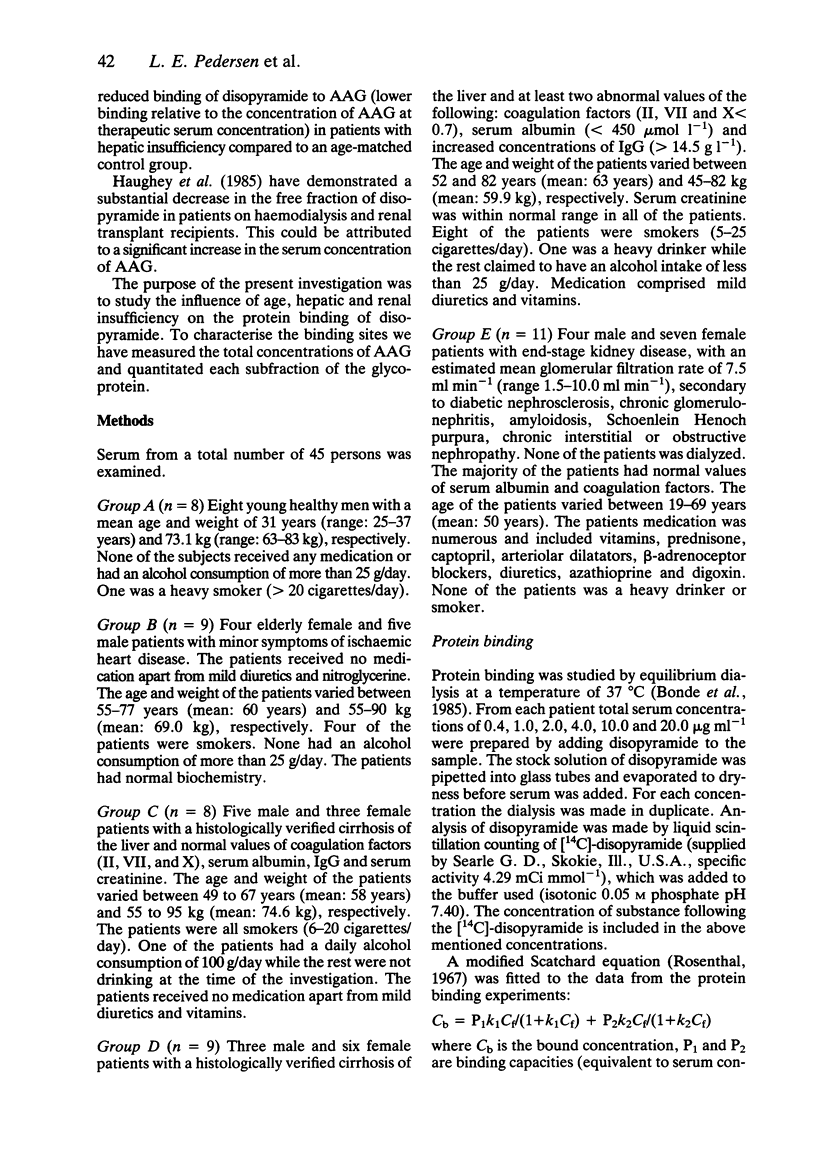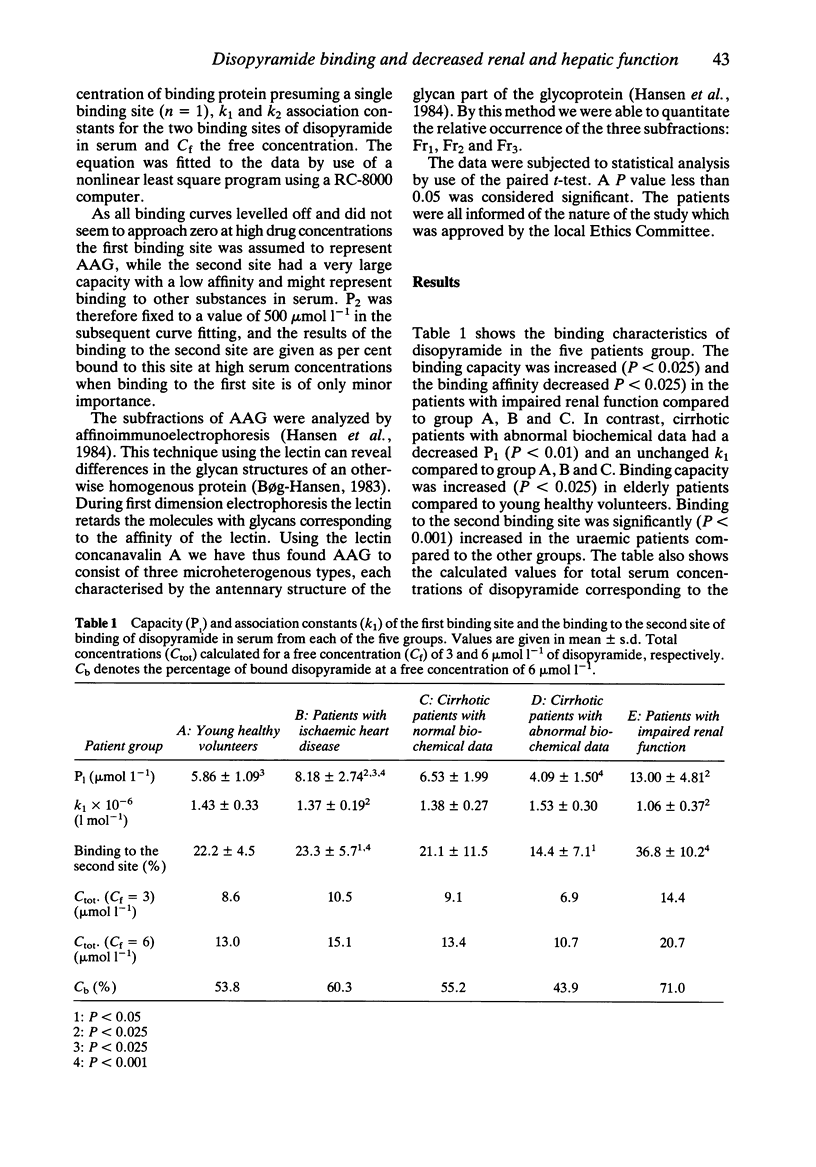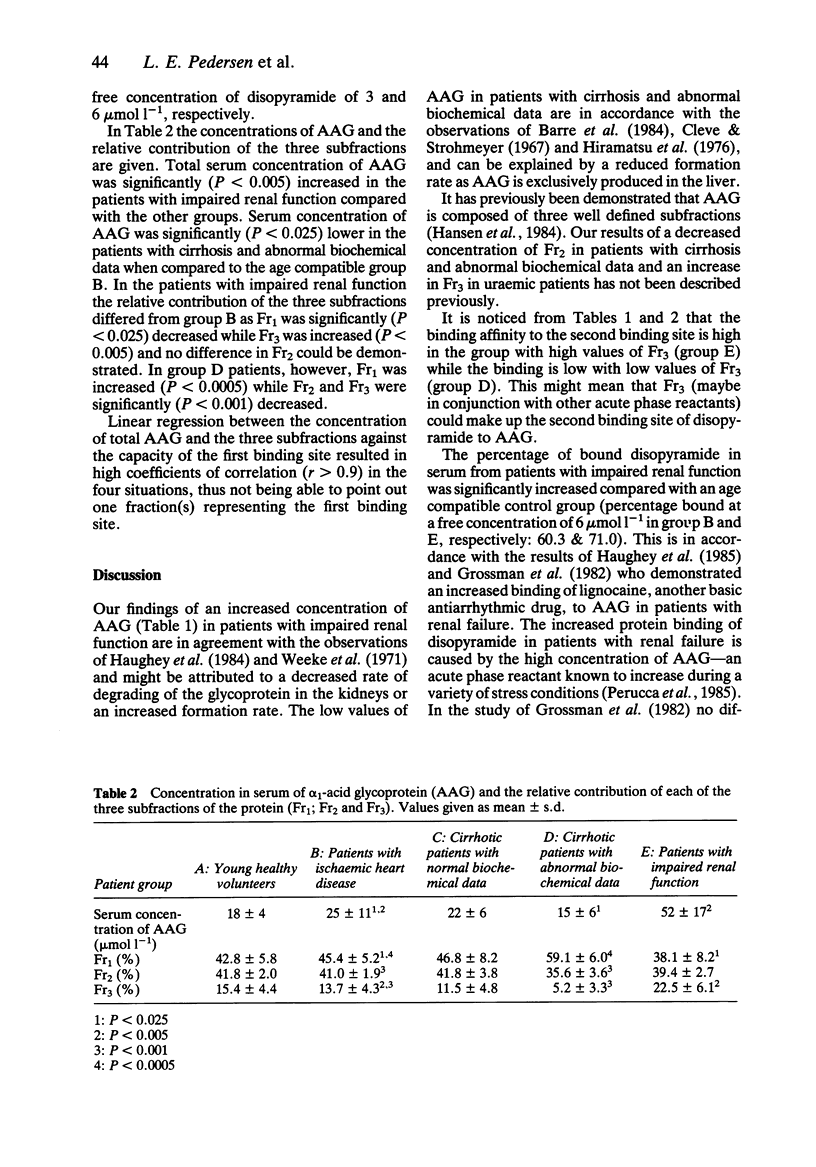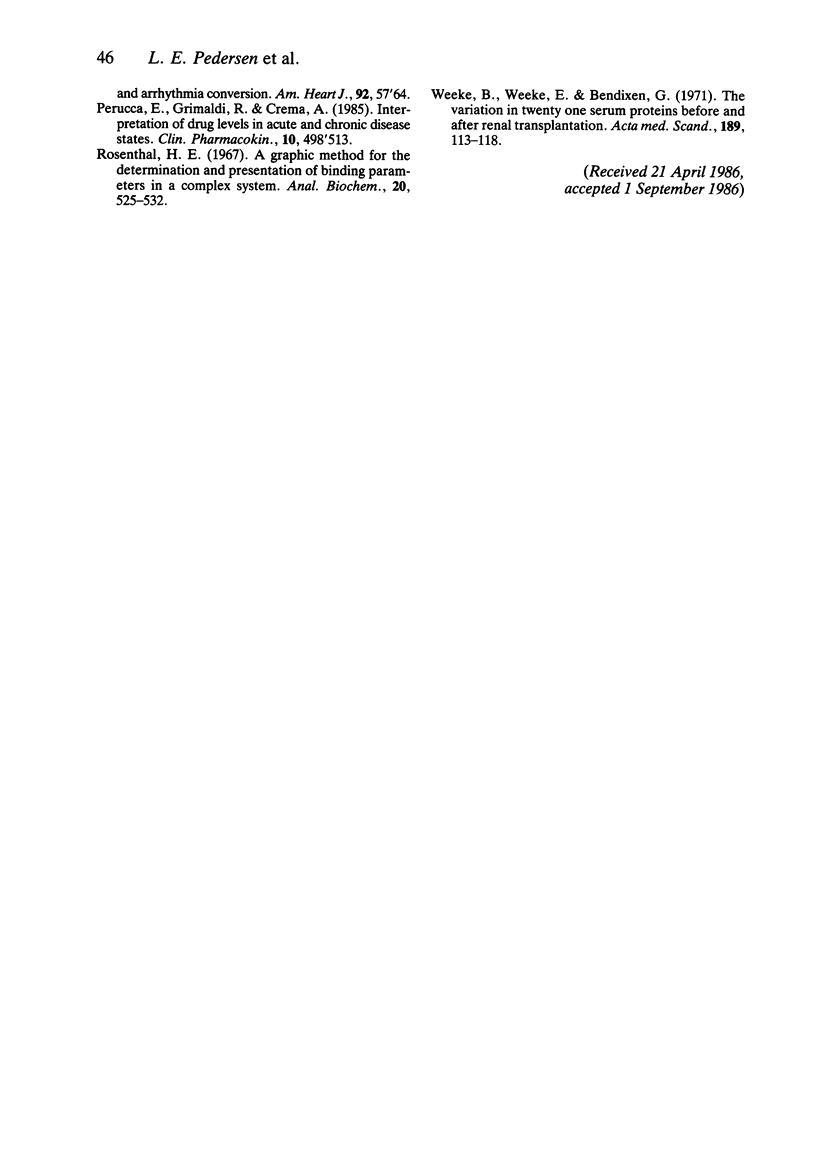Abstract
Protein binding of disopyramide, binding capacities, affinity constants and serum concentrations of alpha 1-acid glycoprotein (AAG) were studied in five groups of patients. A: young healthy volunteers (n = 8); B: elderly patients with minor symptoms of ischaemic heart disease (n = 9); C: patients with cirrhosis of the liver and normal values of coagulation factors (II, VII and X), albumin and immunoglobulin G (n = 8); D: patients with cirrhosis and at least two abnormal of the previously mentioned values (n = 9) and E: eleven patients with severely impaired renal function. Subfractions of AAG (Fr1, Fr2 and Fr3) were determined by affinoimmunoelectrophoresis. AAG concentration was significantly (P less than 0.005) elevated in group E patients and decreased (P less than 0.025) in group D patients. Fr2 is probably associated with the high affinity, first binding site of disopyramide to AAG. Earlier observations of a reduced qualitative binding of disopyramide in patients with cirrhosis can be explained by a significant decrease in Fr2 (P less than 0.001) in group D patients. The protein binding of disopyramide in patients with uraemia was significantly increased due to a significant (P less than 0.005) increase in AAG concentration in spite of a smaller (P less than 0.025) affinity constant. Suggestions for therapeutic drug monitoring based on total serum concentrations are given.
Full text
PDF





Selected References
These references are in PubMed. This may not be the complete list of references from this article.
- Barre J., Houin G., Rosenbaum J., Zini R., Dhumeaux D., Tillement J. P. Decreased alpha 1-acid glycoprotein in liver cirrhosis: consequences for drug protein binding. Br J Clin Pharmacol. 1984 Oct;18(4):652–653. doi: 10.1111/j.1365-2125.1984.tb02525.x. [DOI] [PMC free article] [PubMed] [Google Scholar]
- Bonde J., Pedersen L. E., Bødtker S., Angelo H. R., Svendsen T. L., Kampmann J. P. The influence of age and smoking on the elimination of disopyramide. Br J Clin Pharmacol. 1985 Nov;20(5):453–458. doi: 10.1111/j.1365-2125.1985.tb05096.x. [DOI] [PMC free article] [PubMed] [Google Scholar]
- Bredesen J. E., Kierulf P. Relationship between alpha 1-acid glycoprotein and plasma binding of disopyramide and mono-N-dealkyldisopyramide. Br J Clin Pharmacol. 1984 Nov;18(5):779–784. doi: 10.1111/j.1365-2125.1984.tb02542.x. [DOI] [PMC free article] [PubMed] [Google Scholar]
- Cleve H., Strohmeyer G. Quantitative Variationen von Serumglykoproteinen bei pathologischen Prozessen; Bestimmng von saurem alpha-1-Glycoprotein, Gc und alpha-2-Makroglobulin mit der radialen Immunodiffusion. Klin Wochenschr. 1967 Oct 15;45(20):1051–1054. doi: 10.1007/BF01727819. [DOI] [PubMed] [Google Scholar]
- Cunningham J. L., Shen D. D., Shudo I., Azarnoff D. L. The effects of urine pH and plasma protein binding on the renal clearance of disopyramide. Clin Pharmacokinet. 1977 Sep-Oct;2(5):373–383. doi: 10.2165/00003088-197702050-00004. [DOI] [PubMed] [Google Scholar]
- Davis D., Grossman S. H., Kitchell B. B., Shand D. G., Routledge P. A. The effects of age and smoking on the plasma protein binding of lignocaine and diazepam. Br J Clin Pharmacol. 1985 Feb;19(2):261–265. doi: 10.1111/j.1365-2125.1985.tb02641.x. [DOI] [PMC free article] [PubMed] [Google Scholar]
- Grossman S. H., Davis D., Kitchell B. B., Shand D. G., Routledge P. A. Diazepam and lidocaine plasma protein binding in renal disease. Clin Pharmacol Ther. 1982 Mar;31(3):350–357. doi: 10.1038/clpt.1982.45. [DOI] [PubMed] [Google Scholar]
- Haughey D. B., Kraft C. J., Matzke G. R., Keane W. F., Halstenson C. E. Protein binding of disopyramide and elevated alpha-1-acid glycoprotein concentrations in serum obtained from dialysis patients and renal transplant recipients. Am J Nephrol. 1985;5(1):35–39. doi: 10.1159/000166900. [DOI] [PubMed] [Google Scholar]
- Hiramatsu S., Kojima J., Okada T. T., Inai S., Ohmori K. The serum protein profile in chronic hepatitis, cirrhosis and liver cancer. Acta Hepatogastroenterol (Stuttg) 1976 Jun;23(3):177–182. [PubMed] [Google Scholar]
- Rosenthal H. E. A graphic method for the determination and presentation of binding parameters in a complex system. Anal Biochem. 1967 Sep;20(3):525–532. doi: 10.1016/0003-2697(67)90297-7. [DOI] [PubMed] [Google Scholar]
- Weeke B., Weeke E., Bendixen G. The variation in twenty-one serum proteins before and after renal transplantation. I. General pattern. Acta Med Scand. 1971 Jan-Feb;189(1-2):113–118. doi: 10.1111/j.0954-6820.1971.tb04349.x. [DOI] [PubMed] [Google Scholar]


